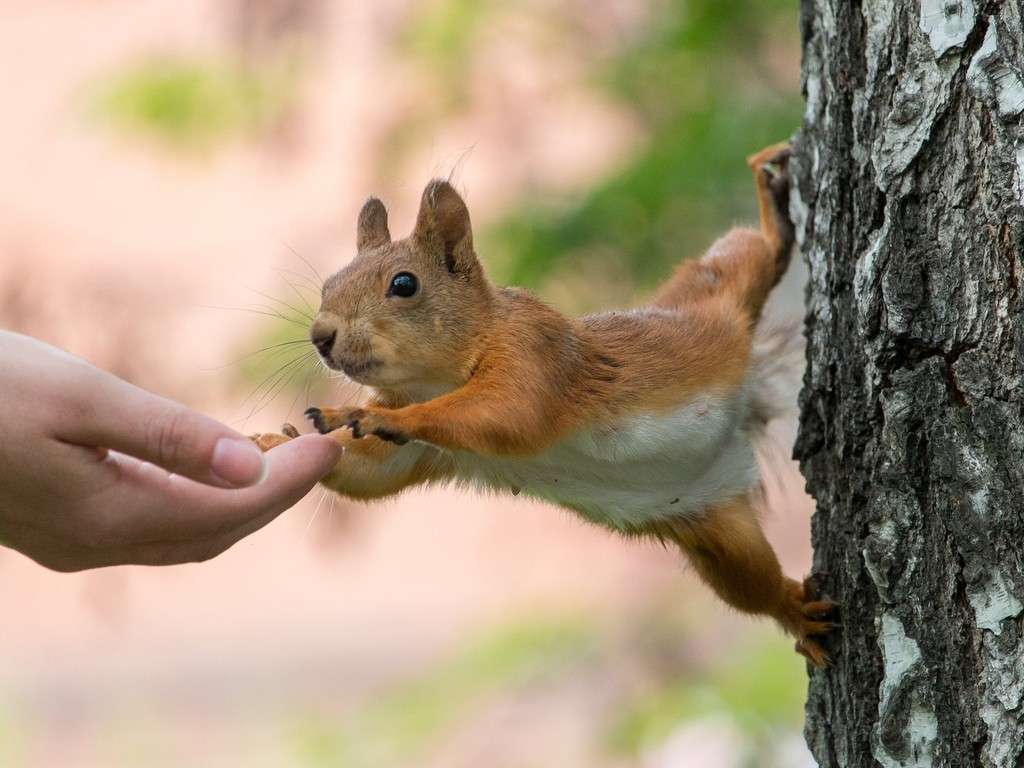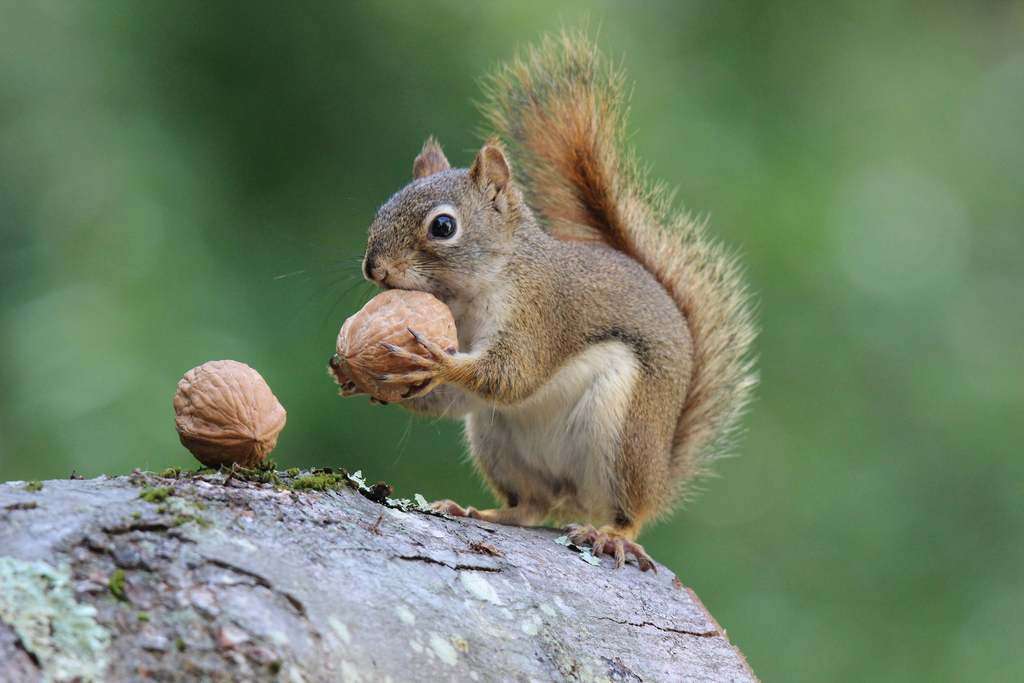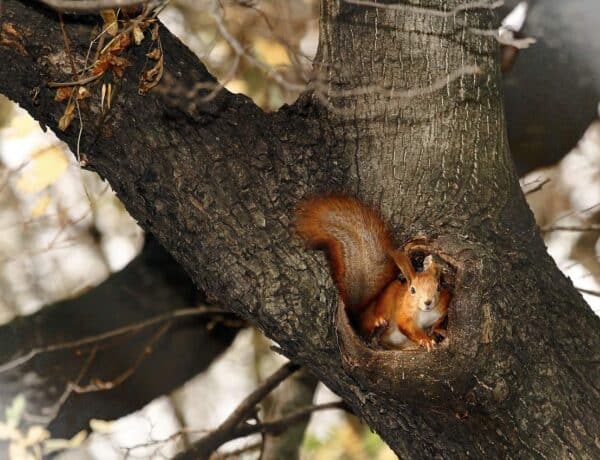Introduction
How Big Is A Squirrel: Squirrels, those small and agile creatures that scamper through our parks and woodlands, have long fascinated both nature enthusiasts and casual observers alike. While they may seem diminutive at first glance, these rodents exhibit a surprising diversity in size and appearance across various species and geographic regions. From the petite chipmunks that can fit comfortably in the palm of your hand to the more substantial tree-dwelling fox squirrels, the world of squirrels encompasses a wide range of sizes and characteristics.
The fascinating world of squirrels and discover just how big they can get, shedding light on the remarkable adaptations and behaviors that have allowed these small mammals to thrive in ecosystems around the globe. Uncover the dimensions of squirrels, it becomes evident that these creatures are not only diverse in size but also in their evolutionary history and ecological niches. Squirrels belong to the family Sciuridae, which includes over 200 species distributed across continents, ranging from the North American gray squirrel to the flying squirrels of Asia. This diversity has given rise to a captivating array of shapes and sizes within the squirrel family.
For instance, smaller squirrels, like the chipmunk, are well-suited for a life underground, where they can efficiently store food in their burrows and navigate through intricate tunnel systems. On the other hand, larger tree-dwelling squirrels, such as the red squirrel, rely on their size to better access larger tree branches and reach food sources that may be out of reach for smaller competitors. Moreover, the size of a squirrel can also vary depending on factors like geographic location and environmental conditions.

How big is a full grown squirrel?
Grey squirrels tend to be larger than Reds, reaching a maximum of 55cm (almost 2ft), of which 25cm (10 in.) may be tail. More commonly, Red squirrels reach about 21cm (8in.), while Greys attain about 26cm (almost 1ft) including the tail.
Gray Squirrels: In North America, gray squirrels are one of the most common species. On average, they measure about 9 to 11 inches (23 to 28 centimeters) in length, with their bushy tails adding another 7 to 9 inches (18 to 23 centimeters). They typically weigh between 14 to 20 ounces (400 to 570 grams).
Fox Squirrels: Fox squirrels are larger than gray squirrels. They can measure around 17 to 27 inches (43 to 69 centimeters) in total length, including their tails. Their weight can vary widely, but they are generally heavier than gray squirrels, with some individuals reaching 2 pounds (900 grams) or more.
Red Squirrels: Red squirrels are smaller than gray and fox squirrels. They typically measure about 7 to 9 inches (18 to 23 centimeters) in length and weigh around 5 to 9 ounces (140 to 250 grams). They have distinctive reddish-brown fur and are often found in coniferous forests.
Ground Squirrels: Ground squirrels, like the California ground squirrel, are adapted to burrowing and have slightly different dimensions. They can range from 9 to 12 inches (23 to 30 centimeters) in length, excluding their tails, and weigh between 7 to 13 ounces (200 to 370 grams).
What is the size of a squirrel?
The sexes look the same, adults are between 10.5 and 15 inches long with tails averaging 3.5–6 inches. Red squirrels are typically rusty red or reddish brown on the back and white or gray-white on the belly. The tail is rusty, sometimes tinged with yellow.
Length: Squirrels typically measure anywhere from about 5 inches (13 centimeters) to 27 inches (69 centimeters) in total length, including their tails. The tail can account for a significant portion of their length.
Weight: The weight of a squirrel also varies widely by species. Most squirrels weigh between a few ounces (100-200 grams) to a pound (450 grams) or more. Larger species, like the Malabar giant squirrel, can weigh even more.
Height: Squirrels are usually small, with a height at the shoulder of around 4 to 9 inches (10 to 23 centimeters), depending on the species.
How big is a squirrel in feet?
Squirrels are generally small animals, ranging in size from the African pygmy squirrel and least pygmy squirrel at 10–14 cm (3.9–5.5 in) in total length and just 12–26 g (0.42–0.92 oz) in weight, to the Bhutan giant flying squirrel at up to 1.27 m (4 ft 2 in) in total length, and several marmot species, which can weigh.
Squirrels, within their lifetime, will grow to be about two feet long, which is usually around the length of a standard ruler. You can imagine that this includes their tail as well! Their height will vary slightly depending on what species they are but it’s usually around six inches tall or so.
Squirrels are relatively small animals, so their size is typically measured in inches or centimeters rather than feet. As mentioned earlier, the length of a squirrel, including its tail, can range from about 5 inches (13 centimeters) for smaller species to up to 27 inches (69 centimeters) for larger species.
To put this in perspective in terms of feet, a squirrel’s length can vary from roughly 0.4 feet (5 inches) to approximately 2.25 feet (27 inches), with the tail included. However, it’s that most squirrels are on the smaller end of this range, and very few species reach the upper end of the size spectrum.
When standing on their hind legs, squirrels can reach heights of 6 to 10 inches (15 to 25 centimeters). They often adopt this posture to get a better view of their surroundings or to reach food in trees.
Is A squirrel bigger than a Rat?
The most noticeable difference with squirrels vs rats is their appearance. Squirrels are likely to be larger than rats, and they have that big, bushy tail that can stick up. Rats are often the smaller of the two. A rat’s tail is much thinner and does not have hair.
In general, squirrels tend to be larger than most common rat species. The typical squirrel, like the gray squirrel or fox squirrel found in North America, is larger than the common brown rat. These squirrels can measure around 9 to 27 inches (23 to 69 centimeters) in length, including their tails, and weigh between a few ounces to a pound or more, depending on the species.
On the other hand, common brown rats, often referred to as Norway rats, are smaller than many squirrel species. They typically measure about 9 to 11 inches (22 to 28 centimeters) in length, excluding their tails, and weigh roughly 7 to 19 ounces (200 to 550 grams).
However, it’s essential to recognize that there are various species of squirrels and rats worldwide, and their sizes can vary. Some larger rat species may be comparable in size to smaller squirrel species. Ultimately, the size comparison between a squirrel and a rat depends on the specific species of each and the region in which they are found.
Is A squirrel bigger than a cat?
Not big, but not small either Squirrels are not little creatures. Well, they are, but not when compared to a cat. They can be about a third or even half the size of a cat (if they’re huge or if the cat is dainty).
Squirrels and cats are two very different animals in terms of size, and in most cases, squirrels are considerably smaller than cats.
Squirrels, depending on the species, generally range in size from about 5 inches (13 centimeters) to 27 inches (69 centimeters) in length, including their tails. However, the vast majority of squirrel species fall on the smaller end of this spectrum, typically measuring 9 to 12 inches (23 to 30 centimeters) in length.
On the other hand, domestic cats vary in size, but even the smallest adult cats are usually larger than the average squirrel. The size of a domestic cat can range from approximately 18 inches (46 centimeters) to 20 inches (51 centimeters) in length, excluding their tails, which can add another 11 to 12 inches (28 to 30 centimeters).
In the wild, there are larger cat species like the bobcat or lynx, which are substantially bigger than squirrels. These wild cats can measure up to 40 inches (100 centimeters) or more in length.
Is A squirrel bigger than a Mouse?
On the other hand, squirrels have slender bodies and bushy tails. They are larger than mice but smaller than raccoons. They have four paws, but their hind legs are longer than the front limbs. Their fur color varies between species, but the most common ones are white, gray, brown, and red.
In the comparison between squirrels and mice, the size difference is quite noticeable, with squirrels typically being larger than mice. Squirrels, depending on the species, range from about 5 inches (13 centimeters) to 27 inches (69 centimeters) in length, including their tails. The average squirrel, like the common gray squirrel or fox squirrel, is larger than the typical mouse.
Mice, on the other hand, are generally much smaller. House mice, one of the most common mouse species, typically measure about 2.5 to 4 inches (6 to 10 centimeters) in length, excluding their tails. Other mouse species may vary slightly in size, but they remain smaller than squirrels.
The size distinction between squirrels and mice is not only in their length but also in their overall body mass. Squirrels tend to be heavier and more robust compared to the delicate and slender build of mice.
What is smaller than a squirrel?
Chipmunks are much smaller than squirrels. Their fur is brownish to gray in color and they have white or black stripes on their back and head. Like some other rodent species, chipmunks have cheek pouches on both sides of their mouth which they use for transporting food.
Mice: Mice, such as the common house mouse, are significantly smaller than squirrels. They typically measure around 2.5 to 4 inches (6 to 10 centimeters) in length, excluding their tails.
Voles: Voles are another type of small rodent that is smaller than squirrels. They typically range in size from 3 to 7 inches (8 to 18 centimeters) in length, depending on the species.
Shrews: Shrews are tiny mammals known for their small size. They are usually around 2 to 4 inches (5 to 10 centimeters) in length and have a slender body structure.
Hamsters: Hamsters are small rodents commonly kept as pets. They are generally smaller than most squirrel species, with an average length of 4 to 7 inches (10 to 18 centimeters).
Insects: Insects, such as ants, bees, and beetles, are significantly smaller than squirrels and represent a vast diversity of sizes within their own groups.
Small Birds: Many small bird species, like sparrows and finches, are smaller than squirrels. They typically have lengths ranging from 4 to 8 inches (10 to 20 centimeters), depending on the species.
Amphibians and Reptiles: Numerous amphibians and reptiles, including frogs, toads, and certain lizards, are smaller than squirrels. They can vary widely in size, but most are smaller in comparison.
What’s a baby squirrel look like?
Depending on their age, infant squirrels may have a short, thin coat of fur or no fur yet at all (see pictures below). They have a thin tail (not bushy) and their eyes may be closed or may have just opened. If you have found an infant squirrel, its best chance for survival is to be reunited with its mother.
Size: Newborn baby squirrels are very tiny, measuring just a few inches in length. They are often less than 4 inches (10 centimeters) long from nose to tail tip.
Naked and Blind: Baby squirrels are born naked, without fur, and their eyes are closed. Their ears are also sealed shut at birth.
Pink Skin: Their skin is pink and soft, and they have a slightly wrinkled appearance.
Helpless and Dependent: Baby squirrels are completely dependent on their mother for warmth, nourishment, and protection during their early weeks of life. They are unable to move about on their own and rely on their mother to keep them safe.
Growth: As they grow, baby squirrels develop a fine layer of fur, and their eyes and ears gradually open. Their fur initially appears sparse and may be a light grayish color.
Nursing: They feed exclusively on their mother’s milk, which provides essential nutrients for their growth and development.
Nest: Baby squirrels are typically born in nests, known as dreys or dens, which are often located in tree hollows or leafy nests built by their mother.

Conclusion
The squirrel has led us captivatingly through the rich and diverse world of these remarkable rodents. We’ve discovered that squirrels, far from being a uniform species, exhibit a stunning range of sizes, shapes, and adaptations across their many species and habitats. From the palm-sized pygmy squirrels to the awe-inspiring Malabar giant squirrels, the squirrel family showcases the wonders of evolution and adaptation. But size is just one facet of the squirrel’s story. Squirrels teach us about the incredible diversity that exists within even the most common of species.
We’ve learned that these creatures possess an array of behaviors and adaptations that enable them to thrive in their respective environments. Their agility, ability to leap great distances, and their innate hoarding instincts all contribute to their success as they navigate the challenges of their chosen habitats. Beyond their physical characteristics, squirrels play crucial roles in ecosystems worldwide. They disperse seeds, helping to regenerate forests, and serve as prey for a variety of predators, contributing to the delicate balance of nature.
Their playful and curious nature also brings joy and fascination to those who observe them. In contemplating the question of how big a squirrel is, we have gained a deeper appreciation for the intricacies of the natural world. Squirrels, with their diversity and adaptability, remind us of the boundless wonders waiting to be discovered in the animal kingdom. So, whether you encounter a tiny chipmunk or a majestic tree-dwelling squirrel, take a moment to marvel at these enchanting creatures and the myriad mysteries they hold within their diminutive frames.





No Comments